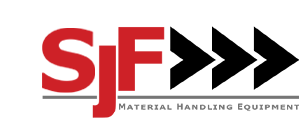What is Steel Shelving?

Steel shelving (also known as clip shelving) is one of the most ubiquitous storage products on the market. This shelving is a simple yet effective storage solution for light to medium weight loads and can be reconfigured and moved around very easily. You'll find this shelving solution in warehouses, offices, garages and backrooms across the world.
This shelving utilizes clips to connect the individual shelves to the uprights. The clips slip into holes in the uprights to provide support for the shelves.
Unfortunately, because it is such a popular storage solution, there are many different clip styles and clip types that must match to assemble a working shelf unit. In other words, not all clip shelving is interchangeable.
Choosing Steel Shelving
Step 1: Choose from Starter or Adder Units

The first decision in ordering steel shelving is deciding whether you need a starter unit, add-on unit or both. The starter unit can stand by itself or you may purchase add-on units to attach to the starter unit. For example, if you want a row of three shelving bays, you would order one starter unit and two add-on units.
Step 2: Choose Shelf Quantity & Capacity
Next you can choose the number of shelves you want your shelving unit to have. All metal shelving sold online is 7 feet 1 inch in height. Also choose a rough capacity you'll need. SJF carries both light and heavy duty steel shelving online. Additional shelves can also be ordered for these shelving units.
Step 3: Choose Width & Depth
Now you'll make a selection on the actual shelf size. Widths of 36" and 48" and depths of 12", 15", 18" or 24" are available online*.
*Note: Custom heights and other options are available by calling SJF directly at (320) 485-4974 (direct sales line) or (800) 598-5532.
Step 4: Steel Shelf Assembly
Starter and add-on units include all posts, sway braces, shelves, clips and hardware necessary for assembly. Shelf clips are designed for easy installation and shelf re-positioning and clips are formed of heavy gauge steel for maximum weight bearing capability. If you like, you also have the option of assembling these shelves with bolts and nuts (instead of clips).
Steel Shelving Components

1: Angle Posts
- Roll-formed of heavy gauge steel
- Greatest stability because of the stiffening offset rib
- Act as 'brackets' to frame rows of shelving - All outside shelf posts should be corner posts
2 & 3: Beaded Posts
- Provides maximum weight support due to tubular steel design
- Used as front shelving posts or common intermediate posts
- Two-sided construction allows independent positioning of shelves
- Unique offset design maximizes shelf space and ease of accessibility
- Ideal for mezzanine use
4 & 5: Sway Braces
- Used with open units for added stability
- Can be placed on the sides and/or backs of shelving units
6: Shelves
- Choose from light or heavy duty depending on storage needs
- All shelves are flanged twice on each side and triple flanged on front and rear
- Top surface of shelves punched on 2" centers for adjustment of dividers
- Also punched for label holders, angle sway braces, reinforcing bars and angles on both front and rear faces
7: Foot Plate
- Encloses the bottom of the unit, preventing parts from being lost underneath
8: Label Holders
- Label holders make finding products easy
9 & 10: Back Panels and End Panels
- Turn open shelving into closed shelving units
11: Shelf Dividers
- Divide shelves into separate sections
12: Bin Fronts
- Divide your closed shelving into several individual bin type compartments
13: Foot Plates
- Anchor your shelving to the floor for extra rigidity
14: Clips/Nuts and Bolts
- Ties the shelves to the posts



